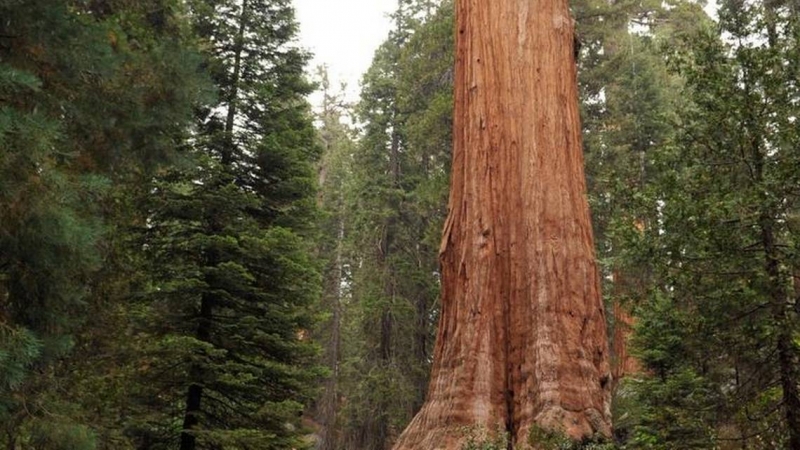
The towering giant sequoias in the Sierra Nevada struggled to endure the recent drought as temperatures continued to inch higher and higher each year, a new study has found.
While the historically resilient trees managed to largely withstand the die-off that was prevalant in California forests, they did so at a price: depleting their underground water storage, according to a study conducted by the U.S. National Park Service, the Sierra Nevada Research Institute at UC Merced and the Chinese Academy of Sciences and Sun Yat-sen University.
“Giant Sequoias have this mystique, that once they reach maturity, they are practically immune to the forces that kill other trees,” says Koren Nydick, a coauthor of the study and the science coordinator at Sequoia and Kings Canyon National Parks . “But during and just after the recent severe drought, we’ve seen a small number of sequoias die, at least in part to the dry conditions. It’s an important wake-up call.”
The researchers studied 30 years of satellite images to determine the greenness and wetness of sequoia groves in places such as Camp Nelson, Wilsonia, Hartland and Silver City. The data showed that forest conditions are changing as an increase in other tree species zaps stored water.
In the past, those findings wouldn’t have raised red flags. But droughts are projected to be more severe as temperatures continue to warm, meaning higher demands on limited supplies of stored water.
Some groves were more vulnerable than others, the study found. Sequoias in lower elevations below the snow line were more vulnerable in drought conditions than sequoias in higher elevations where snow provided more underground water storage.
Scientists worry the giant sequoias may not survive future droughts and climate incidents unless policy is created for forest management.
“Historically, the Sierra Nevada had these low-intensity fires,” says Roger Bales, a study coauthor who is a professor at UC Merced and the director of the Sierra Nevada Research Institute. “Some were lightning caused, and some were managed by the Native Americans who lived there. After the Native Americans were gone or removed, there was no one there to do it.”
Instead, the federal government practiced fire suppression, Bales says.
Now, forests need controlled burns and thinning of trees plagued by drought and bark beetles, Bales says. Since there’s no sign Congress will fund such projects, forest partners need to work together to get it done, Bales says.
“We want want to do that selectively, in a controlled way, and not let a wildfire roll through” he says. “We want to maintain the other benefits you get from a forest, like wildlife habitat and recreation.”


